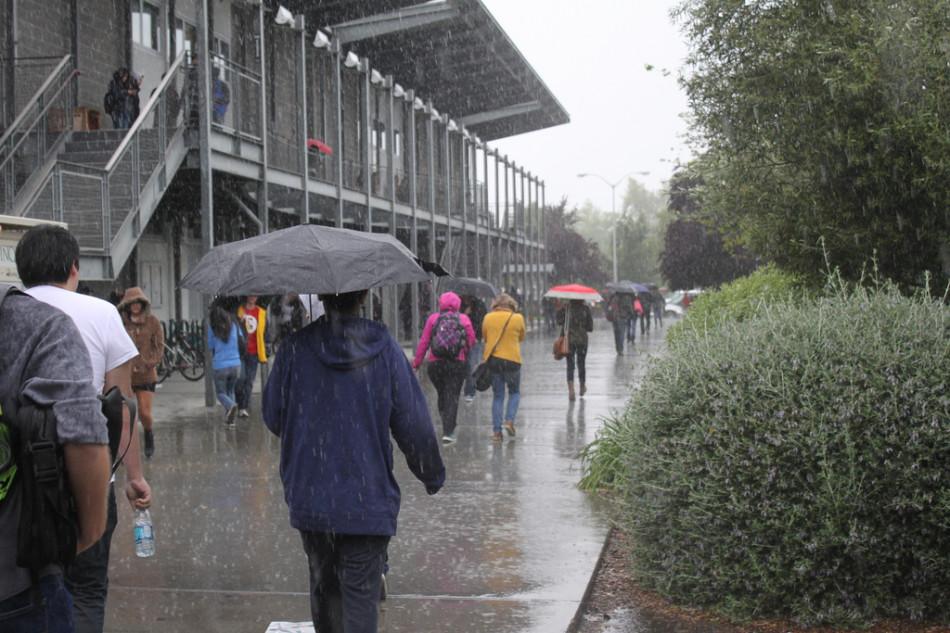Students and faculty adapts to shorter breaks
Rain drenched students rush to class during the brief 10 minute passing period.
April 2, 2014
The change to the the break schedule has forced teachers to adapt to the loss of five minutes after class.
While on the surface it may seem like a big struggle, some faculty members are able to cope, without it hindering their workload.
Kim Schenk, senior dean of curriculum and instruction, oversees the course and classroom scheduling from semester to semester.
She states that the change from a 15 minute break to a 10 minute break, “wasn’t a wholesale change.” It only affected limited number of classes that were scheduled in a way that was “not standard with the other local community colleges.”
This change was not made solely by one group; it included the United Faculty as well as the administration.
Schenk continues, saying, “we were thinking there wouldn’t be a big impact on students because many of our classes are scheduled so there is only a ten minute break.” If this becomes a big issue for students and they determine that lengthening the break time in between classes “would improve the quality of life for folks, they will certainly do that.”
Schenk compares scheduling to a tapestry.
“You pull a thread and there is going to be an unravel somewhere,” she said.
If class breaks were extended, Schenk informs that, “every class block would be pushed later.”
A class that normally adjourns at 2:30 p.m. would push the end of class back to 3:00 p.m. or even 3:30 p.m. That may not affect the early morning and afternoon classes, but those who take night classes will see themselves leaving class at 10:30 p.m instead of 9:30p.m.
Co-coordinator of the learning center and English instructor, Adam Bessie, discusses both the pros and cons he sees with this 10 minute break. One problem he deals with is the lack of time to get to one class to another.
“Since I have one class here in the learning center and another in the language arts, I got to really hoof it,” he said. “If I were to have a class even further out, it would be really tough.”
He claims that he is unable to stay after class as long with students, “losing slack time,” for both parties. But he enjoys the extra five minutes he can use in class.
“For my teaching style, having that extra five minutes has allowed me to slow down my pace and in the end round things out,” continues Bessie.
Some instructors are trying to alleviate the pressure that the shortened break has on students, but some don’t need the extra time.
One student, Daniel Cordero reports some of his instructors letting students out five minutes early, however, for him it is not needed.
“Fortunately, I don’t have to rush to my next class, because I have it in the building next door,” says Cordero.
The pros for this break change outweigh the cons for Bessie, but he does not know how other students or other faculty members will react to this change in the long run.
He would gladly keep the break the way it is because it allows him to help his students more efficiently in class.
News editor Collin James contributed to this article.







































































